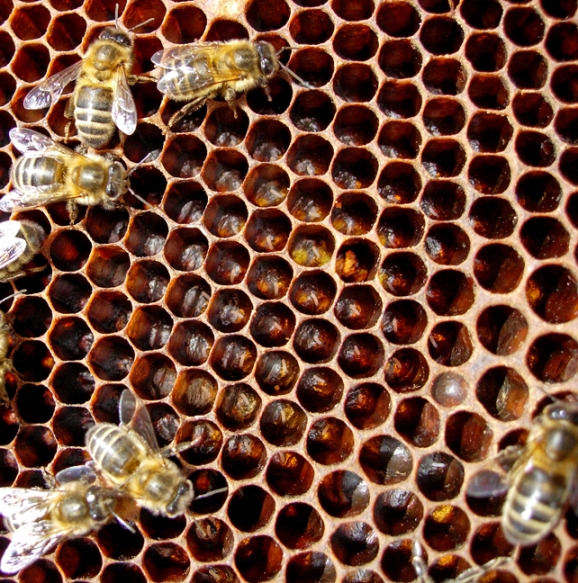Supercedure: Replacing a Queen
Posted by borderglider on August 15, 2009
The bees are starting to get ready for winter and several of my hives have replaced – or ‘superceded’ their queens during August. Usually, honeybees would only replace a Queen if she were damaged in some way, or because she was getting old – after 2 or 3 years. However, many beekeepers have noticed that colonies are superceding their young queens, just two or three months after they start laying . Currently we have no explanation for this abnormal behaviour, and as far as I know, there is no official research going on into this phenomenon. In general, the bees replace a queen if she is physically damaged (missing a foreleg for examole), if her behaviour is ‘wrong’, or her pheromones no longer satisfy the workers. If they have a good queen who is say 2 years old, they may not want to go into the winter with a queen who will not be in perfect shape when March or April arrives. They will not be able to produce a new, mated queen until drones are on the wing in May, so the hive decided to supercede in autumn as an insurance, so that when Spring arrives they have a new, fertile queen in full health and vigour.
Honeybees build three kinds of Queen cells:
- Swarm cells
- Emergency Queen Replacement Cells
- Supersedure Cells
Swarm cells are usually built in May – in large numbers (6 – 15 cells at a time) and usually around the edges of a frame
Emergency cells are started if a queen dies, is lost or is crushed – usually fewer in number and on the small side
Supercedure cells are built in the centre of a frame-face, usually just one or two and quite large, deeply pitted with wax
I found this empty supercedure cell a few days ago in one of my hives. A virgin queen has obviously emerged from it – since the hinged cap is missing and the bees have begun to break down the mouth of the cell. Sometimes they build empty cells, but this one has definitely had a queen emerge from it; the proof is the very tough silk cocoon which lines the cell, spun by the queen-larva before it pupated. If you try to tear the mouth of such a cell with a knife or hive tool, it is amazingly strong and resists damage; this is a good way of checking if a queen has emerged.
The new-laid eggs in this section of comb show that supercedure has taken place successfully and that the new queen has probably mated successfully; final proof of successful mating will be confirmed if these cells are given nice flat-caps, proving they are worker brood. If the cells were given domed cappings it would show that the new queen had failed to mate and was a ‘drone-layer’.


Leave a comment